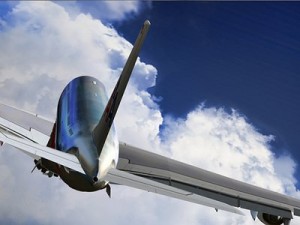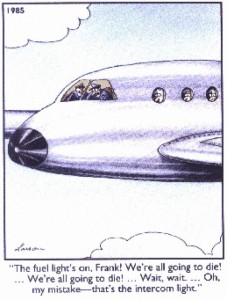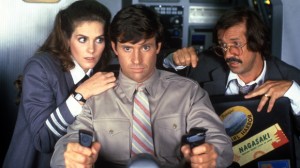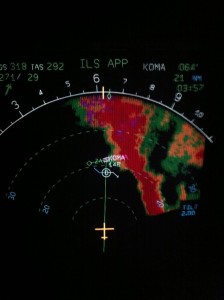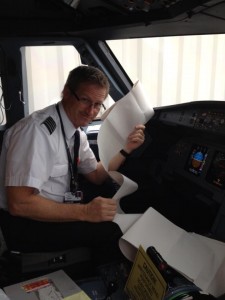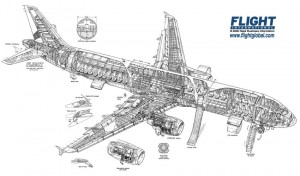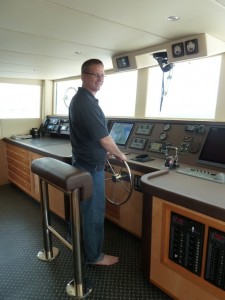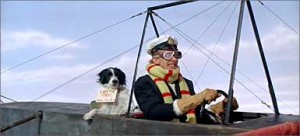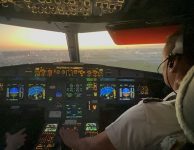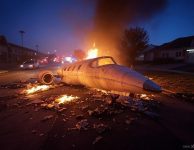Cap’n Aux Answers Your #AvGeek Questions—Part I
OK, deep breath, here goes…
If a plane is “shooting an instrument approach,” such as an ILS, through the clouds, there’s a point at which the pilots must land visually, or go-around. This is called a “Missed Approach.”
Despite all the melodramatic, “I thought we wuz gonna die!” tales that passengers inevitably babble about to their friends afterwards, both maneuvers are totally routine. Personally, I would say we execute a go-around on average about once every 6 months. I talk about go arounds at the end of my video, “Zen and the Art of Landing”:
—abort a take-off?
While nowhere near as common as a go-around, a take-off abort is still somewhat routine. Like the go-around, we practice them all the time in the sim.
In my career, I’ve only had to abort a takeoff once, in LAX, when a fuel valve went nuts and surged the Number 2 engine in our DeHavilland Dash 8. I gotta tell ya, those autobrakes during an abort are something else. I got plastered to the windshield! (And, by the way, our abort prompted the airplane behind us to go around—a bit of a domino effect!)
Airline dispatchers are super good at figuring the proper amount of fuel. From time to time, I’ll boost the fuel a bit if I feel the need. Knock on wood, in 22 years of flying for my airline, I’ve never had to cut into my emergency reserve fuel before landing.
The only time I “ran out of fuel” was as a student. There were 2 tanks in my single engine Grumman Cheetah, and I was on a cross country. I forgot to switch tanks to burn them evenly. On short final, the engine sputtered! I pounced on that tank switch at lightning speed, and got the engine right back. But I landed with my heart in my throat! That was a lesson well-learned!
I’ve had a few “in-flight emergencies” over the years, but really nothing to “write home about.” As a flight instructor, I used to teach my students to declare an emergency if you get a hangnail! You get priority ATC handling, and the fire trucks roll. It’s always better to be safe than sorry.
Much along the same lines, I’ll default to “declaring an emergency” when something’s a bit suspect. Still, (again knock on wood), nothing news-worthy.
But the paperwork’s a b*tch!
A medical emergency is by far the most common emergency. We have a nationwide system called Medlink, where the pilots can patch in and talk to an MD. The flight attendants relay the patient’s info to us, and we relay back to them what to do. However, if it involves breaking into the onboard emergency medical kit, it requires a qualified medic. On an average airliner flight, there is usually at least one doctor, nurse or EMT aboard, which helps immensely.
If things get really dire, we have to divert to the nearest suitable airport to get the patient on the ground and into a hospital stat.
More than just pretty faces, Flight Attendants are also trained in basic medical procedures, including using the onboard defibrillator. Airlines have saved a few lives aboard over the years!
—had to do an emergency descent because of pressurization issues – what are the procedures for that?—from Mark L.
While it does happen from time to time, I’ve never experienced the real thing. However, we practice it in the sim quite often. It’s one of the few “memory items” we have–basically, don our O2 masks, turn 90° off course (if on an airway), and dive! Followed up, of course, by the emergency checklist, declaring an emergency with ATC, landing at the nearest suitable airport, etc.
A “rapid depressurization” is not nearly as dramatic as it seems. Unless there is serious questionable structural damage, the technique is fairly routine. The most important part is getting the O2 mask on to stay conscious!
. . . and, unlike in Hollywood, at airliner altitudes, nobody gets sucked out of a 2″ gap in the hull!
More common is a “slow depressurization.” Say, a door seal is not working that great, and the air pressurization can’t keep up with it. So, slowly, the cabin altitude rises (i.e., the air gets thinner.) This may result in the same thing—the oxygen mask “jungle” drops in the cabin, and we have to make a high dive to lower altitude—but again, it would be a relatively benign “emergency.”
Hmm, we deal with weather so much, that’s tough to answer.
Hands down, however, would be my Hurricane Hugo adventure in the Virgins Islands, which I wrote about last year:
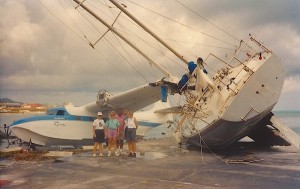 |
| Planes & Hurricanes don’t mix… |
Gone With the Hurricane:
http://capnaux.com/?p=101
Part II:
http://capnaux.com/?p=99
But as for “normal” storms…
99.9% of the time, it means diversion, delay and avoidance—diverting to an alternate, circling, or just sitting on the ramp until the storm passes.
My record wait time onboard was 8 hours on the ramp in EWR! That was the slowest moving storm front I ever saw, but there was nothing we could do about it! I simply kept the passengers informed the whole time, and to a one they were all nice and understanding. I didn’t mention that, when we finally took off, it was within minutes of our “drop dead” legal maximum time to work—we nearly had to cancel the flight!
By the way, weather RADAR is for thunderstorm avoidance, not penetration!
Honestly, very few people come to mind with that question. By and large, “quirky personalities,” shall we say, can be dealt with by treating that person with dignity and respect. Truly hearing to what they have to say, and then validating their concerns. Most often, a conflict comes from lack of communication and understanding.
Google CRM, or Crew Resource Management (Wiki: http://en.wikipedia.org/wiki/Crew_resource_management). This is one of the best concepts to come down the pipe for flight crews in the past 30 years.
Air disasters of the past have been studied for human factors, and we are now much more “evolved” and “enlightened” as to how to work with each other in the cockpit.
To see this evolution, look no further than Star Trek’s Captain Kirk vs. Captain Picard.
 |
|
|
Pre-80’s, our concept of the Captain was that of a tinhorn Dictator. Nowadays, it’s the egalitarian that trusts and respects his crew, and in so doing builds a team.
 |
| Cap’n Picard: Hears from his team. Makes an informed, intelligent decision. Everybody wins! (Except the Romulans!) |
That said, the mark of a good FO is one who can almost psychically adapt to the quirks of the Captain’s personality and still do his job. There’s a lot of big, overinflated egos in this business, that are easily chafed. Several times as an FO, I detected a potential conflict brewing. But rather than getting upset and “tuning out,” I found a way to validate the Captain’s concerns. Suddenly, I was their best friend!
 |
| Cap’n Aux: Makes a decision. You don’t like it, there’s the emergency slide! |
Captains don’t have that burden. My job is MUCH easier in the Left Seat!
For an example of the perfect FO, see “Zen and the Art of Pilot Maintenance” (http://capnaux.com/?p=137)
For more on Captains, see “Go Ahead: Make Captain’s Day” (http://capnaux.com/?p=108)
Cap’n Aux answers readers’ Q’s—Part II
We explore the life of an airline pilot,
and a “typical day at the office!”
Sample Q’s:
—What is your typical work day/week/month schedule?
—Bill K.
—How do you balance the need for the flight attendants to do their job, versus, the need for them to “sit down?”
Cap’n Aux answers readers’ Q’s—Part III




